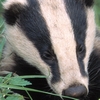Industry call for DEFRA to allow badger cull to reduce bovine TB risk

Farming and veterinary organisations in the UK have presented a joint statement to DEFRA detailing how the government should tackle bovine tuberculosis.
At a meeting last Thursday (24 August) the group agreed several points, the main being that badgers in areas heavily affected by TB should be culled.
The government, they say, should approve applications for culling licences as permitted under the Protection of Badgers Act 1992.
But the group does not suggest farmers carry out the culling. Instead they should employ suitably trained individuals to do it.
Crucially, the proposals give industry control of the operation while minimising the cost to the government. They also allow DEFRA to remain distant from the issue, other than the approval of licences and provision of suitable maps.
In accordance with the Independent Scientific Group’s conclusions of the Randomised Badger Culling Trial, the group also advocates culls are carried out across areas of at least 300sq km by urging farmers to collaborate with their neighbours.
Initially, the culling method would be cage trapping followed by shooting (as used in the RBCT). But it suggests carbon monoxide and, possibly, stop-snares be adopted as first choice methods once approved.
Meurig Raymond, deputy president of the NFU, said: “We’ve done all we can here. We’ve agreed a position which will involve farmers continuing to put up with cost and inconvenience, but as part of a partnership approach with government.
“This agreement has now been issued to the minister, Ben Bradshaw. This places the ball very firmly in the government’s court. We’re prepared to play our part, are they prepared to play theirs?”
British Veterinary Association president Freda Scott-Park endorsed Mr Raymond’s comments saying the time had come for some joined-up thinking.
“We’re very much supportive of the NFU and its mature approach. As a dairy farmer I know how challenging farming is. With TB it’s even worse. As a veterinary surgeon it is quite distressing to see the disease expanding year on year. We are particularly concerned by the number of closed herds going down with TB.”
Dr Scott-Park added that she often hoped to achieve consensus across all groups involved in the TB debate, including conservationists, if only they would listen to reason.
DEFRA is understood to be reviewing the statement.
| STAKEHOLDER STATEMENT |
|---|
| |
